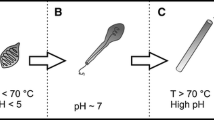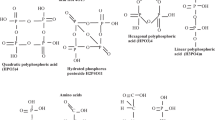Abstract
The influence of the herbicide 2,4-Dichlorophenoxyacetic acid on the growth of cultured chicken muscle cells was studied by observing morphological changes and by cytophotometric measurement of the DNA content of individual cells. DNA-synthesis curves were derived from the distribution of DNA values. No marked effects were observed at a concentration of 60 μg per liter. In contrast, doses of 600 μg per liter caused a loss in cell differentiation consisting of a partial lack of polar orientation, diminished formation of fibers, and an increase of the N/C ratio. The nuclear matrix of desoxyribonucleoprotein (DNP) changed to a more heteropycnotic structure. Isolated cell necroses were found after 44 hrs of exposure. When compared to the controls, the relative DNA synthesis time was found to be prolonged 1.5-fold. The number of cells in the G2 phase decreased during 44 hrs of exposure. It is concluded from this results that the dosedependent growth inhibition of 2,4-D on vertebrate cells in culture takes effect during DNA synthesis. The morphological changes of the nuclear structure suggest that 2,4-D directly affects the template activity of the DNP matrix.
Zusammenfassung
Der Einfluß des Herbicides 2,4-Dichlorphenoxyessigsäure auf das Wachstum von Skelettmuskelzellen des Huhns in Zellkulturen wurde anhand morphologischer Veränderungen und durch cytophotometrische Bestimmung des DNS-Gehaltes von Zellkernen untersucht. Aus der Verteilung der DNS-Meßwerte wurden Synthesekurven abgeleitet. Bis zu Konzentrationen von 60 μg/ml waren keine deutlichen Effekte erkennbar. Dagegen verursachten Konzentrationen von 600 μg/ml einen Verlust der Zelldifferenzierung, bestehend in einem Fehlen der polaren Wachstumsrichtung der Zellen, verminderter Faserbildung und einem Ansteigen der Kern-Plasma-Relation. Damit war eine Heterochromatisierung des Desoxyribonucleoproteins in den Zellkernen verbunden. Nach 44stündiger Einwirkung traten vereinzelte Zellnekrosen auf. Die relative DNS-Synthesedauer war gegenüber den Kontrollen auf das 1,5fache verlängert. Die Anzahl der Zellen in der G2-Phase war nach 44 Std Einwirkungsdauer vermindert. Aus den Befunden wird auf eine dosisabhängige Wachstumshemmung von Vertebraten-Zellen durch 2,4-D geschlossen, die während der DNS-Synthese wirksam ist. Die morphologischen Veränderungen der Kernmatrix legen die Vermutung nahe, daß durch 2,4-D die Aktivität des Chromatins direkt beeinflußt wird.
Similar content being viewed by others
References
Anonymous: Thalidomide effect from defoliants. Sci. Res. 4, No. 23, 11–12 (1969)
Audus, L. J.: The physiology and biochemistry of herbicides. New York: Academic Press 1964
Bjorklund, N. E., Erne, K.: Toxicological studies of phenoxyacetic acid in animals. Acta vet. scand. 7, 364–390 (1966)
Bjorn, M. K., Northen, H. T.: Effects of 2,4-dichlorophenoxyacetic on chicken. Science 108, 479–480 (1948)
Böhm, N., Sprenger, E.: Fluorescence cytophotometry: A valuable method for the quantitative determination of nuclear Feulgen-DNA. Histochemie 16, 100–118 (1968)
Bradbury, D., Ennis, W. B.: Stomatal closure in kidney bean plants treated with ammonium-2,4-dichlorophenoxyacetate. Amer. J. Bot. 39, 324–328 (1952)
Dudley, A. W., Thapar, N. T.: Fatal human ingestion of 2,4-D, a common herbicide. Arch. Path. 94, 270–275 (1972)
Erne, K.: Studies on the animal metabolism of phenoxyacetic herbicides. Acta vet. scand. 7, 264–271 (1966)
Geldmacher-von Mallinckrodt, M.: Two cases of fatal poisoning (suicide) with chlorinated phenoxyacetic acids (2,4-D and MCPA). Arch. Toxicol. 21, 261–278 (1966)
Grunow, W., Böhme, Chr.: Über den Stoffwechsel von 2,4,5-T und 2,4-D bei Ratten und Mäusen. Arch. Toxicol. 32, 217–225 (1974)
Holm, R. E., O'Brien, T. J., Key, J. L., Cherry, J. H.: The influence of auxin and ethylene on chromatin-directed ribonucleic acid synthesis in soybean hypocotyl. Plant Physiol. 45, 41–45 (1970)
Kolberg, J., Helgeland, K., Jonsen, J., Tjeitveit, O.: The herbicide 2,4-dichlorophenoxyacetic acid I: Effect on L cells. Acta pharmacol. (Kbh.) 29, 81–86 (1971)
Li, M. F., Jordan, C.: Use of spinner culture cells to detect water pollution. J. Fisheries Res. Board Canada 26, 1378–1382 (1969)
Lutz-Ostertag, Y., Lutz, H.: Action nefaste de l'herbicide 2,4-D sur le development embryonaire et la fécondité du gibier à plumes. C. R. Acad. Sci. (Paris) D 271, 2418–2421 (1970)
Norman, C.: Academy reports on Vietnam herbicide damage. Nature 248, 186–188 (1974)
Osborne, D. J.: Defoliation and defoliants. Nature (Lond.) 219, 564–567 (1968)
Preiss, D., Rossner, J. A.: Wirkung von 2,4-Dichlorphenoxyacetat auf das transversale tubuläre System des Myokard. Naturwissenschaften 58, 567 (1971)
Roll, R.: Untersuchungen über die teratogene Wirkung von 2,4,5-T bei Mäusen. Food Cosmet. Toxicol. 9, 671–676 (1971)
Scherbaum, O., Rasch, G.: Cell size distribution and single cell growth in tetrahymena pyriformis GL. Acta path. microbiol. scand. 41, 161–182 (1957)
Stein, W., Kuhn, E.: Modellmyotonie nach 2,4-Dichlorphenoxyacetat (2,4-D). Isoliertes Rattenzwerchfellpräparat als einfaches Untersuchungsobjekt. Klin. Wschr. 46, 328 (1968)
U.S. Secretary's Commission on Pesticides and their Relationship to Environmental Health: A Report. U.S.Governement Printing Office 0-371-374, 664–667 (1969)
Walker, E. M., Gadsden, R. H., Atkins, L. M., Gale, G. R.: Some effects of 2,4-D and 2,4,5-T on Ehrlich ascites tumor cells in vivo and in vitro. Industr. Med. Surg. 41, 22–27 (1972)
Walker, P. M. B.: The mitotic index and interphase processes. J. exp. Biol. 31, 8 (1954)
Wasserberg, C., Goodrich, F. J.: A study of the anatomical effects produced in the leaves of datura strammonium L. by the action of 2,4-dichlorophenoxyacetic acid. J. Amer. pharm. Ass. sci. Ed. 45, 495–497 (1956)
Way, J. M.: Toxicity and hazards to man, domestic animals, and wildlife from some commonly used auxin herbicides. Residue Rev. 26, 37–62 (1969)
Zetterberg, A., Killander, D.: Quantitative cytochemical studies on interphase growth. Exp. Cell Res. 39, 22–32 (1965)
Author information
Authors and Affiliations
Additional information
Dedicated to Professor Wilhelm Doerr on his 60th birthday.
Supported by the Deutsche Forschungsgemeinschaft.
Rights and permissions
About this article
Cite this article
Haag, D., Goerttler, K. & Preiss, D. The influence of non-cytotoxic concentrations of the herbicide 2,4-dichlorophenoxyacetic acid on the DNA synthesis in cultured vertebrate cells. Arch. Toxicol. 33, 91–102 (1975). https://doi.org/10.1007/BF00353234
Received:
Issue Date:
DOI: https://doi.org/10.1007/BF00353234




